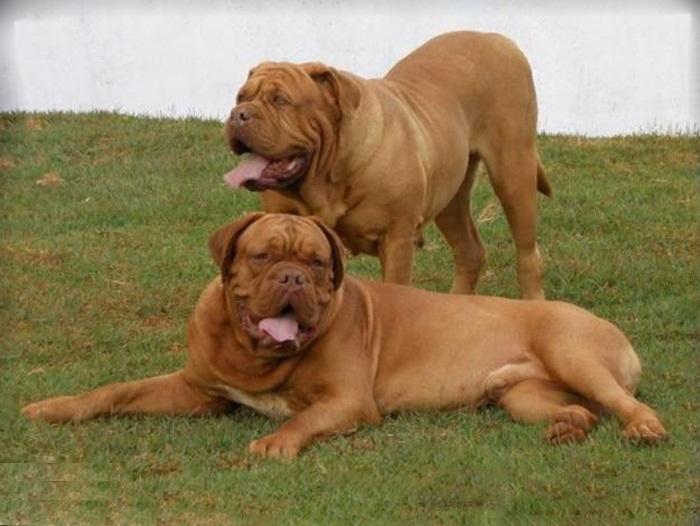Mastiff
IUCN
LCBasic Information
Feature
The Mastiff is a dog that is highly aggressive, energetic, and cheerful, yet also calm, loyal, and affectionate.
Distribution and Habitat
Originated from the UK
Appearance
Head. The head profile gives a very muscular appearance when viewed from any angle (width is very important). The head is broad, slightly flat between the ears, and the forehead is slightly arched, showing wrinkles when paying attention, which is his distinctive feature. The brow ridges are moderately prominent. The muscles of the frontal corners are well defined, and the cheeks are very powerful. There is a vertical wrinkle in the middle of the forehead. It extends from between the eyes to the back and ends halfway up the head. The ears are small in comparison with the head. They are V-shaped and slightly rounded at the tips. The earlobes are slightly thin and set far apart, located on both sides of the top of the head, at the top of the extension line of the head. When he is at rest, the ears are close to the cheeks. The ears are dark in color, the darker the better, and the same color as the muzzle. The eyes are set well apart, of medium size, and not too prominent. The expression i
Details
The Mastiff is also called "Napoleon" in China. It is one of the largest dog breeds. Now it is ranked alongside the Great Dane as a "easy-going giant dog".

The Mastiff is one of the oldest dog breeds and was considered a treasure by the ancient Babylonians four thousand years ago. After the time of Caesar, it appeared in Britain. This dog proved to be able to take on formidable guarding and hunting duties. After World War II, its number in the United States declined, but the situation is now improving.
3000 years ago, there were images of mastiffs in ancient Egyptian paintings. This breed was brought to Britain by Persian merchants or Anglo-Saxon invaders. The Celts raised mastiffs. In 55 BC, Caesar used this dog to fight when he invaded Britain. According to historical records, the Mastiff should be a giant dog introduced to Britain from distant Egypt by Persians in ancient times. Because Europeans at that time had never seen such a huge canine, it was left in Britain, and its bloodline genes were used to breed new dog breeds. Therefore, in many large dogs in European countries today, there are more or less genes of the Mastiff. Later in the 17th century, mastiffs participated in battles, hunting bears, wolves, fighting dogs or bears. In the 19th century, after this type of competition was banned, the popularity of mastiffs in Britain also declined. There are two systems of this dog breed, one is the breed bred by the Duke of Devonshire in Chezswas, and the other is the breed bred by the County of Cheshire.
The Mastiff was formerly called a "warrior", but now it is listed as an "easy-going giant dog" alongside the Great Dane. Some are used as guard dogs, and some are used as emotional family dogs.
Although the Mastiff is large in size and has a ferocious face, it is loyal, stable, smart, and very kind to people, especially likes to play with children. Abroad, it is regarded as a member of the family and an emotional family dog. The Mastiff loves nature and needs a lot of space for running and exercise, so it is not suitable for families living in apartments.
Protect wild animals and stop eating game.
Maintaining ecological balance is everyone's responsibility!








